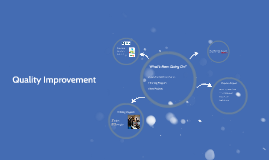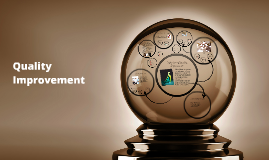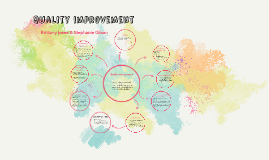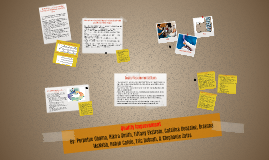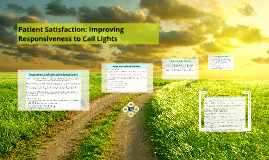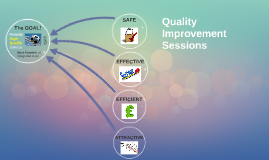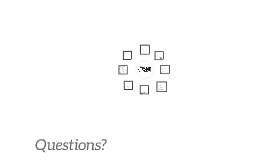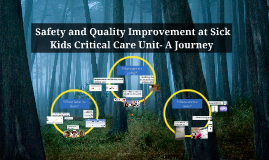Quality Improvement
Transcript: Background Information and Data/Evidence Findings/Results/Outcomes of Interventions Conclusions and Recommendations for Practice DO Establish Service Expectations: Standard response time to call light, Non-clinical personnel guidelines, Adequately fulfill call light requests Provide proper training: Identify responsibilities of support staff, Scripting, Role Play Patient Satisfaction: Improving Responsiveness to Call Lights HCAHPS Question: "During this hospital stay, after you pressed the call button, how often did you get help as soon as you wanted it?" May 2013 MBU scores: 81.8% of patients responded call lights "always" answered Problem statement: In order to maintain and improve call light response time, global standards such as acknowledgment and resolution must be reached National Context: Hospital consumer assessment of healthcare providers and systems (HCAHPS) is a patient satisfaction survey based on core measures and patient perception of care. Why does this matter? Scores are used nationally by companies to determine insurance coverage and reimbursement. Reduces stress and patient stay in hospital. Encourages healing and communication. Reduces medication errors and law suits. Incentives for individual and unit. PLAN "No Pass Zone" Anyone can answer a call bell Responsiveness to Call Lights and the National Context References Bournes, D., & Flint, F. (2003). Mis-takes: Mistakes in the nurse-person process. Nursing Science Quarterly, 16(2), 127-130. DiNapoli, P. P., Turkel, M., Nelson, J., & Watson, J. (2010). Measuring the caritas process: Caring factor survey. International Journal of Human Caring, 14(3), 15-20. Ganz, F. (2012). Tend and Befriend in the Intensive Care Unit. Critical Care Nurse, 32(3), 25-34. doi:10.4037/ccn2012903 Henderson, S. (2003). Power imbalance between nurses and patients: A potential inhibitor of partnership in care. Journal of Clinical Nursing, 12(4), 501-508. doi:10.1046/j.1365-2702.2003.00757.x Knudsen, E. & Grenier, J. (2010). A great patient experience = positive HCAHPS scores [PowerPoint slides]. Retrieved from http://campaignforquality.sites campaignforquality.com/files/presentations/A%20Great%20Patient %20Experience%20-%20Positive%20HCAHPS%20Scores.pdf Lachman, V. (2012). Applying the ethics of care into your nursing practice. Ethics, Law, and Policy, 21(2), 112-116. Regions Hospital. (2012). 2012 Quality Report. Retrieved from: http:// www.regionshospital.com/ucm/groups/public/@hp/@public/documents/ webcontent/cntrb_036843.pdf Suliman, W. A., Welmann, E., Omer, T., & Thomas, L. (2009). Applying Watson's nursing theory to assess patient perceptions of being cared for in a multicultural environment. Journal of Nursing Research, 17(4), 293-300. Tonges, M. (2011). Translating caring theory into practice. The Journal of Nursing Administration, 41(9), 374-381. Viamontes, G. I., & Nemeroff, C. B. (2009). Brain-body interactions: The physiological impact of mental processes -- The neurobiology of the stress response. Psychiatric Annals, 39(12), 975-984. doi:10.3928/00485718-20091124-03 Viamontes, G. I., & Nemeroff, C. B. (2010). The physiological effect of mental processes on major body systems. Psychiatric Annals, 40(8), 367-380. doi:10.3928/00485713-20100804-03 The No Passing Zone initiative does not mean that non-clinical team members are expected to go into a patient’s room and provide clinical care. Simply put, it means that call lights are everyone’s responsibility, and team members are expected to take the time to acknowledge a call light and ask what the patient needs, and then make the connection with the appropriate team member who can assist the patient. Work as of now... Continue compiling Patient Satisfaction Survey comments and reviewing HCAHPS Focus group sessions with RNs, Aides, and Unit Clerks on implementing No Pass Zone Measure response time to call bells Evidence-Based Practice: - Stress caused by external stimuli leads to activation of stress response, including BS increase and anxiety - HCAHPS is evaluated using PEP Audits: must score 100% to receive incentives - Communication is more beneficial to patient healing using Human Caring Theory and reduces medical errors (i.e. always including teaching and follow up on medications and side effects) - Hourly rounding is the foundation ␣ - Restroom rounds - A supplement to hourly rounding , i.e. after meals and before bed ␣- Service Volunteer Rounding programs - "No Pass Zone" PDSA ACT Non-nursing associates can assist with: moving and obtaining equipment assist with making phone calls and answering phone if beyond reach change TV channels or turn TV on/off turn room lights on/off obtain blanket, pillow, towel, washcloth, slippers, etc open and/or close curtains Regions Hospital (St. Paul, MN) piloted a program in 2012 called the No Pass Zone in which every employee takes responsibility to answer a call light. This resulted in a 12 percent improvement in lights responded to within two minutes and a






